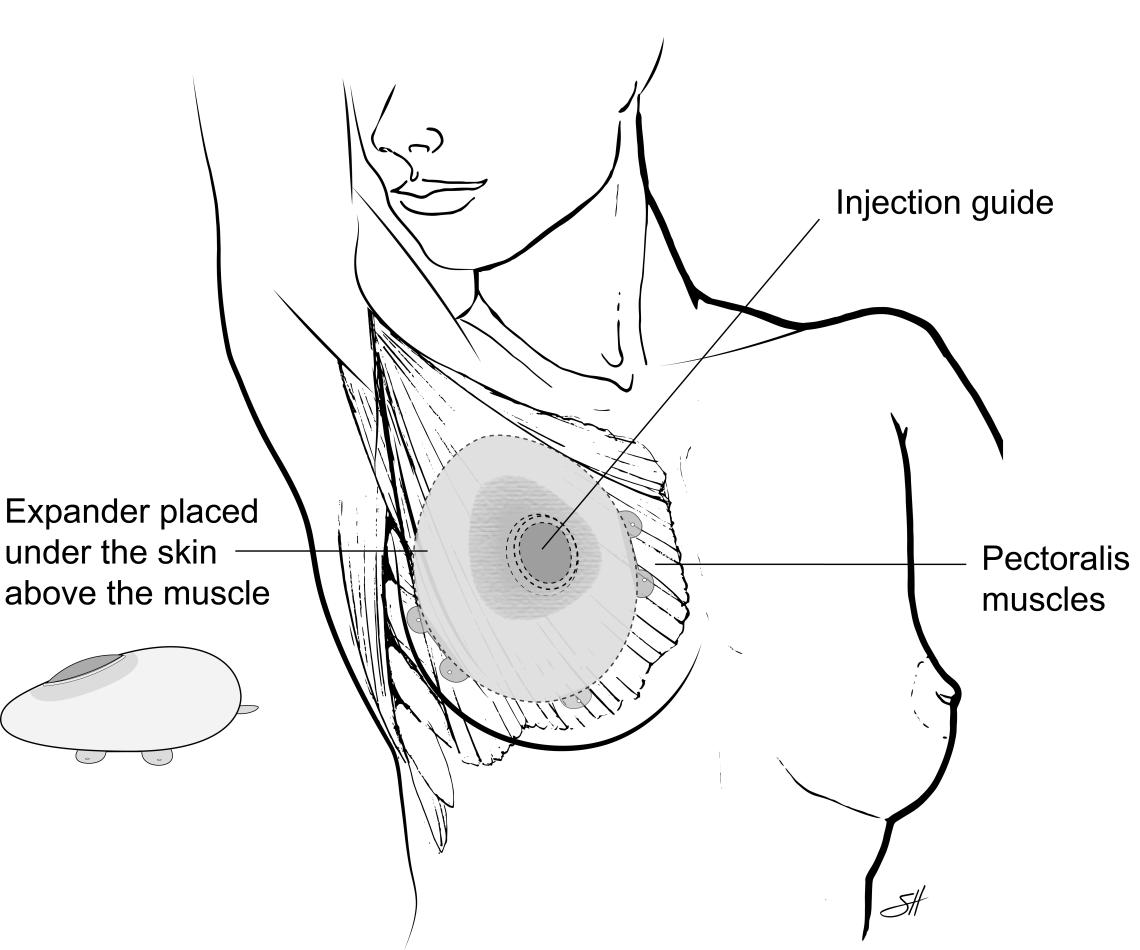Implant-based reconstruction after mastectomy
For those considering breast reconstruction after a mastectomy, implant-based reconstruction is a common and effective option. This approach involves using breast implants to recreate a natural-looking breast shape.
When does implant-based reconstruction occur?
Immediate reconstruction
- With immediate reconstruction, breast reconstruction takes place during the same surgery as the mastectomy.
- The plastic surgeon places a breast implant immediately after the breast cancer surgery team removes the breast tissue.
- This allows individuals to wake up with a reconstructed breast, potentially minimizing the emotional impact of losing a breast.
- This option is only available to certain candidates.
Delayed reconstruction
Delayed reconstruction happens in a few different steps, with the option to insert an implant once the body has recovered.
- After breast removal by the breast surgeon, the plastic surgeon places a deflated balloon-like device called a tissue expander in the spot where your breast tissue was removed.
- You will wake up without a breast mound, but after two post-op visits the plastic surgery team will begin to inflate the tissue expanders where your breasts used to be.
- This approach provides flexibility for individuals who may want to take more time before deciding on their type of reconstruction or for those who need additional treatments, such as radiation therapy, before undergoing reconstruction. The tissue expanders can be more uncomfortable than implants because they are made of hard and soft plastic, which keeps them strong during any more breast cancer treatments that may be needed.
- Your surgeon may use a special kind of skin called cadaveric skin or acellular dermal matrix (ADM). They put it over a tissue expander during the mastectomy surgery. This skin will blend in with your own breast skin, making an “internal-bra” inside your body after the mastectomy. It helps create a good foundation for future reconstruction.
- Breast reconstruction occurs after the mastectomy site has fully healed. This approach provides flexibility for individuals who may want more time to decide on their choice of reconstruction or for those who need additional treatments, such as radiation therapy, before undergoing reconstruction. Delayed reconstruction allows for a staged process, with the option to perform the reconstruction once the body has recovered. The decision between immediate and delayed reconstruction depends on individual circumstances, patient preferences, and the recommendations of the healthcare team. Each approach has its benefits, and it’s crucial for individuals to discuss their options thoroughly with their healthcare providers to determine the most suitable path for their unique situation.

Stages of implant reconstruction
Tissue expansion (optional): In some cases, a tissue expander may be placed first to stretch the skin gradually before inserting the permanent implant. This is a one-hour surgery after your mastectomy. Afterward, saline is added to the expander every one to two weeks in clinic to help stretch the skin to be ready for the implant. This may take several months. When the right size is reached, the expander is taken out and an implant is put in.
Implant placement: The surgeon positions the breast implant in the space created by the mastectomy or tissue expander.
Adjustments and fine-tuning: Additional touch-up surgeries may be done to ensure symmetry and a natural appearance.
Nipple reconstruction: If a new nipple needs to be created, this can be performed in the office procedure space or in a touch-up surgery.

What types of implants are currently used?
There are several types of implants that are available. Baylor Medicine uses 5th generation Mentor brand implants. These implants have a soft silicone shell filled with silicone gel. Silicone, as opposed to saline used in some other implants, creates a more natural-looking breast because its weight and texture is more like natural breast tissue. Your surgery team will recommend the version of Mentor implant that will work best for your body type.
Considerations
Recovery time: Implant-based reconstruction often has a shorter initial recovery time compared to some autologous procedures (reconstruction using your body’s own tissue).
Potential future surgeries: Breast implants may need to be replaced over time, and individuals should be aware of the possibility of future surgeries.
Infection and scarring: Implants and tissue expanders can become infected. If this happens, your implant or tissue expander will likely need to be removed. Painful scarring can also occur around the implant.








